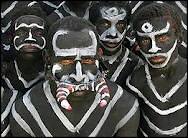Everyone ought to have a pet cause or perhaps you work for a not-for-profit where all your attention lies. What’s the role social media is playing in your attention-getting campaigns?
Yesterday, Geoff Livingston invited me to a tweet bomb. Having never really heard of one, although it was easy to get the purpose, I heartily agreed to support World Hunger Relief, From Hunger to Hope, for children in poverty and malnourishment throughout the world in tandem with World Food Day today.
Today’s tweet bomb is 8:30 a.m. to 9:30 a.m. in all time zones at #HungerToHope in honor of World Food Day sponsored by Razoo and Yum! Brands.
When I clicked the link to see what resources were available, I saw an entire blogger resource kit with:
- Sample tweets
- A Twibbon
- Details for a blog post
- Hashtags and timing
- Images from Flickr
- Facebook cover image for timeline
- Social media buttons
- Full campaign website
- Fact sheet
- Logos
When I saw the kit, I was surprised Geoff hadn’t asked for a blog post, so I volunteered. I also just scheduled about eight tweets to run on two Twitter accounts during the scheduled time of the tweet bomb.
How Social Media Works
Let’s review what just happened above…
1. Geoff and I are in social media marketing; we know one another through the Interwebz. He comments on my blog, I comment on his blog. I bought his book, Marketing in The Round with Gini Dietrich.
2. That gives Geoff the opportunity and comfort to ask his blogger peer network to help support a cause. I do it all the time and have done so with Danny Brown and his 12for12K, and for Shonali Burke to support UNHCR, and we bought blue keys. It was a highly successful campaign, as well.
3. Geoff didn’t ask for a blog post, but I knew that would help the campaign. I’m asking for your consideration to help World Hunger with tweets and even a few of your pennies.
Those who manage causes cannot ignore bloggers’ influence or social media networking. A tweet bomb is a perfectly easy way to showcase an issue and even create a trending topic (which is likely exactly what #HungerToHope is aiming for).
When you decide to incorporate social media into a campaign on any scale, pay close attention to the blogger resource kit; it’s exactly what I needed to write this post with ALL the detail at my fingertips.
So, today’s ask is for you to support World Food Day with tweets, pennies, posts, or a nod in the direction of your favorite charitable cause.










